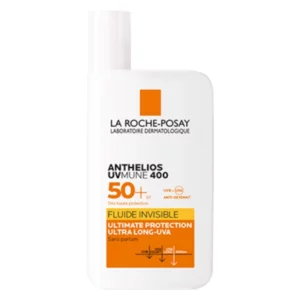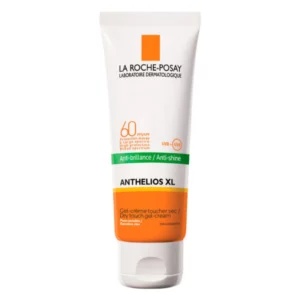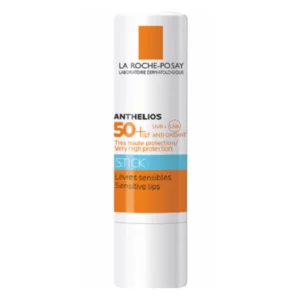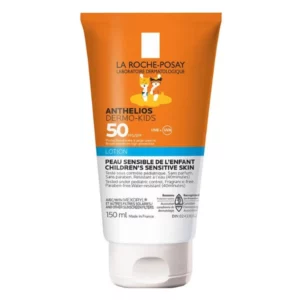Anthelios sunscreens with Mexoryl have an enviable reputation for their formulations, wearability and, of course, the effectiveness of the Mexoryl XL and SX sun filtering system. But have you ever wondered how the active ingredients in your sunscreen work together to protect your skin?
To make the most well-informed decisions about sunscreen, it’s important to read labels and realize that not all sunscreens are created equal.
How Do Sunscreen Filters Work?
Before we discuss how sun filters work, it’s important to understand how the sun’s rays can cause skin damage.
The sun is made up of shorter length UVB rays and longer length UVA rays. UVB rays are responsible for tanning—that golden glow that so many covet. But, they can also lead to sunburns. UVA rays, on the other hand, penetrate deeper into the skin and contribute to wrinkles, premature aging and allergic reactions. Both types of rays can lead to skin cancer.
Sunscreen filters help to protect skin by blocking damage caused by ultraviolet rays. Some protect against UVB rays only; others against UVA rays and some against both types of rays.
Whichever sunscreen you use, it’s important to select one that will protect you against both types of rays.
What is the Chemistry Behind Sunscreen?
You’ve no doubt heard the term SPF—Sun Protection Factor—a measurement of the amount of UVB protection that a sunscreen delivers.
As of yet, there isn’t an official, internationally recognized standard for measuring the UVA protection of a sunscreen. However, it’s taken that a ‘broad spectrum’ sunscreen delivers adequate protection against both UVA and UVB rays.
Sunscreens often contain a combination of ingredients to help deliver broad spectrum protection because for the most part, there are very few ingredients that will help prevent sun damage across the whole UV spectrum.
Sunscreens may be classified as either physical blocking or chemical blocking:
- Physical blocking sunscreens incorporate one of two ingredients—titanium dioxide or zinc oxide. These work by sitting on top of the skin’s surface and deflecting UV rays away from the skin, helping to prevent sunburns and skin damage.
- Chemical blocking sunscreens work be getting absorbed into the skin’s top layer and also by deflecting away UV rays. They also help to convert the rays into harmless energy.
Sunscreens may contain just physical or chemical sun filters. Or, they may contain a combination of both. One isn’t necessarily better than the other. The most important thing? Is the sunscreen broad spectrum and will it help to protect against both UVA and UVB rays?
In our opinion, this is where Anthelios sunscreens excel!
Do Chemical Sunscreens Block UVA and UVB?
Many sunscreens on the market only deliver UVB protection, so while you may not get a sunburn, you aren’t protecting yourself against skin aging and skin cancers.
Chemical sunscreens can absolutely protect against the entire UV spectrum. The key to this is to make sure that the formulation you’re choosing contains the right kinds of filters. A ‘broad spectrum’ label is your guarantee as sunscreens must demonstrate their effectiveness before they can be sold.
Anthelios sunscreens are made with Mexoryl SX and/or Mexoryl XL, which offer broad spectrum UVA and UVB protection. When combined with other effective sun filtering asuch as titanium dioxide, avobenzone, octocrylene or Tinosorb S, for example, Anthelios delivers excellent protection against sun damage.
In addition to their efficacy, Anthelios formulations are also highly photostable, meaning they don’t degrade when exposed to sunlight, thus preserving their protective properties. Studies have shown that Anthelios maintains the majority of its sun filtering capability even 24 hours after initial application.
Can I Combine 2 Sunscreens?
It is safe to combine 2 sunscreens. But let me tell you why it’s a waste of your money!
You can’t increase your sun protection (SPF) level by combining sunscreens. For example, using one SPF 30 sunscreen and another SPF 15 sunscreen, will NOT give you SPF 45 protection. You’ll still only get maximum SPF 30 protection.
It’s much better to opt for a broad spectrum formulation made with photostable ingredients. And then to reapply every two hours, especially after sweating or swimming.
What Are Main Sunscreen Ingredients?
As you wade through the myriad of sunscreens available on the market today, look for some of these key active ingredients to ensure the most comprehensive, broad spectrum protection for you and your family:
- Titanium Dioxide: blocks UVB rays. It works by creating a physical barrier between the sun and your skin and is effective the moment you apply it. Titanium dioxide is inherently photostable, won’t break down upon UV exposure and is unlikely to cause skin irritation.
- Zinc Oxide: Like titanium dioxide, this stable physical sun filter works by acting as a barrier between the skin and UV rays. Unlike titanium dioxide, it protects against both UVA and UVB rays.
- Mexoryl SX: may also be listed as Terephthalylidene Dicamphor Sulfonic Acid. It blocks UVA rays measuring 290-400 nm, making it particularly effective in guarding against premature aging, wrinkles and other signs of aging.
- Mexoryl XL: may also be listed as Drometrizole Trisiloxane; blocks UVA-II rays in the 320-340 nm range. When combined with Mexoryl SX, we think this sun filter provides the ultimate in UVA protection. Our most popular sunscreen is Anthelios XL SPF 50 Melt In Cream with 3% Mexoryl XL and 0.5% Mexory SX.
- Avobenzone: blocks UVA-I rays. Ideally, avobenzone (butyl methoxydibenzoylmethane) should be stabilized with octocrylene. Anthelios XL SPF 60 Lotion features this important partnership along with titanium dioxide and Mexory SX, and with its 250ml / 8.45 oz size, the value is unbeatable.
- Tinosorb S: blocks UVB as well as UVA rays measuring 280 nm to 400 nm. We’ve noticed that more customers are looking for sun protection that contains not only Mexoryl but also Tinosorb S, a chemical filter known for its photostability with a good safety profile. It isn’t associated with skin irritation and lacks hormone disruption effects associated with some older sun-filtering agents. Tinosorb S adds one more layer of protection against both UVA and UVB rays, an advantage that melanoma survivors are acutely aware of. You’ll find Tinosorb S in Anthelios UVMune 400 Invisible Fluid SPF 50+ as well as Anthelios UVMune 400 Hydrating Cream SPF 50+.
The important thing is to select a photostable, broad spectrum sunscreen with a combination of active ingredients that protects your skin from both UVA and UVB rays that you’ll be happy wearing every day.
Our Favorite Anthelios Sunscreens With Mexoryl and Other Filters




Questions? Give us a call and we’d be happy to help you choose a sunscreen that’s right for you.




